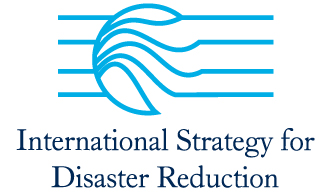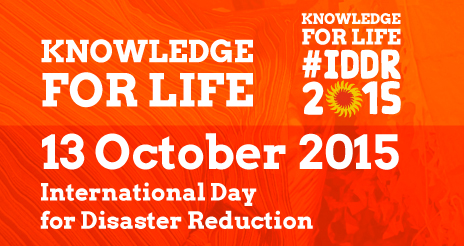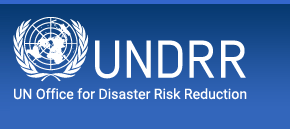- Our Mandate
- Mission and Objectives
- UNDRR in the UN
- Work Programme & Annual Reports
- Results Based System
- Work Partnerships
- Headquarters - Geneva
- SG-UN representatives for DRR
- Regional Office – The Americas and the Caribbean
- Head of the Regional Office – The Americas and the Caribbean
- What is Disaster Risk Reduction?
- What is the International Strategy?
- History of UNDRR
What is the International Strategy?

THE STRATEGY FOR DISASTER REDUCTION
The International Strategy for Disaster Reduction reflects a major shift from the traditional emphasis on disaster response to disaster reduction, and in effect seeks to promote a "culture of prevention".
The International Strategy for Disaster Reduction builds upon the experience of the International Decade for Natural Disaster Reduction (1990-1999), which was launched by the General Assembly in 1989. The International Strategy embodies the principles articulated in a number of major documents adopted during the Decade, including, in particular, the Yokohama Strategy for a Safer World: Guidelines for Natural Disaster Prevention, Preparedness and Mitigation and its Plan of Action, and the text below entitled "A Safer World in the 21st Century: Disaster and Risk Reduction".
Both of these were endorsed at the Programme Forum on the International Decade held in Geneva from 5 to 9 July 1999, which also adopted the Geneva Mandate on Disaster Reduction.
A Safer World in the 21st Century: Disaster and Risk Reduction
Introduction
While hazards are inevitable, and the elimination of all risk is impossible, there are many technical measures, traditional practices, and public experience that can reduce the extent or severity of economic and social disasters. Hazards and emergency requirements are a part of living with nature, but human behaviour can be changed. In the words of the Secretary General,
"We must, above all, shift from a culture of reaction to a culture of prevention. Prevention is not only more humane than cure; it is also much cheaper... Above all, let us not forget that disaster prevention is a moral imperative, no less than reducing the risks of war".
Vision
To enable all communities to become resilient to the effects of natural, technological and environmental hazards, reducing the compound risks they pose to social and economic vulnerabilities within modern societies.
To proceed from protection against hazards to the management of risk through the integration of risk prevention into sustainable development.
Goals
- Increase public awareness of the risks that natural, technological and environmental hazards pose to modern societies.
- Obtain commitment by public authorities to reduce risks to people, their livelihoods, social and economic infrastructure, and environmental resources.
- Engage public participation at all levels of implementation to create disaster-resistant communities through increased partnership and expanded risk reduction networks at all levels.
- Reduce the economic and social losses of disasters as measured, for example, by Gross Domestic Product.
Objectives
- Stimulate research and application, provide knowledge, convey experience, build capabilities and allocate necessary resources for reducing or preventing severe and recurrent impacts of hazards, for those people most vulnerable.
- Increase opportunities for organizations and multi-disciplinary relationships to foster more scientific and technical contributions to the public decision-making process in matters of hazard, risk and disaster prevention.
- Develop a more proactive interface between management of natural resources and risk reduction practices.
- Form a global community dedicated to making risk and disaster prevention a public value.
- Link risk prevention and economic competitiveness issues to enhance opportunities for greater economic partnerships.
- Complete comprehensive risk assessments and integrate them within development plans.
- Develop and apply risk reduction strategies and mitigation measures with supporting arrangements and resources for disaster prevention at all levels of activity.
- Identify and engage designated authorities, professionals drawn from the widest possible range of expertise, and community leaders to develop increased partnership activities.
- Establish risk monitoring capabilities, and early warning systems as integrated processes, with particular attention being given to emerging hazards with global implications such as those related to climate variation and change, at all levels of responsibility.
- Develop sustained programmes of public information and institutionalized educational components pertaining to hazards and their effects, risk management practices and disaster prevention activities, for all ages.
- Establish internationally and professionally agreed standards / methodologies for the analysis and expression of the socio-economic impacts of disasters on societies.
- Seek innovative funding mechanisms dedicated to sustained risk and disaster prevention activities.
Implementation
- Conduct a national audit or assessment process of existing functions necessary for a comprehensive and integrated national strategy of hazard, risk and disaster prevention, projected over 5-10 and 20 year time periods.
- Conduct dynamic risk analysis with specific consideration of demographics, urban growth, and the interaction or compound relationships between natural, technological and environmental factors.
- Build, or where existing, strengthen regional/sub-regional, national and international approaches, and collaborative organizational arrangements that can increase hazard, risk and disaster prevention capabilities and activities.
- Establish coordination mechanisms for greater coherence and improved effectiveness of combined hazard, risk and disaster prevention strategies at all levels of responsibility.
- Promote and encourage know-how transfer through partnership and among countries with particular attention given in the transfer of experience amongst those countries most exposed to risks.
- Establish national, regional/sub-regional, and global information exchanges, facilities, or websites dedicated to hazard, risk and disaster prevention, linked by agreed communication standards and protocols to facilitate interchange.
- Link efforts of hazard, risk and disaster prevention more closely with the Agenda 21 implementation process for enhanced synergy with environmental and sustainable development issues.
- Focus multi-year risk reduction strategies on urban concentration and mega-city environments.
- Institute comprehensive application of land-use planning and programmes in hazard prone-environments.
- Develop and apply standard forms of statistical recording of risk factors, disaster occurrences and their consequences to enable more consistent comparisons.
- Undertake periodic reviews of accomplishments in hazard, risk and disaster reduction efforts at all levels of engagement and responsibility.
- Study feasibility of specific alternative funding and resource allocation modalities that can ensure continued commitment to sustained risk and disaster prevention strategies.
Responsible Parties
Governments have the primary responsibility for protecting citizens from risks and disaster, however, local communities and elements of civil society most threatened by hazards emerge as key initiators of important risk and disaster prevention actions. They must work through partnership, and together, receive necessary encouragement and support to realize the vision of disaster resilience.
Regional/sub-regional and international collaboration is essential, especially with regard to the dissemination of experience and information, scientific and technical applications, continual advocacy and the coordination of strategies to assist in the development of national capabilities.
The United Nations system has a special leadership role in global risk and disaster reduction by its universal character, inter-disciplinary and multi-sectoral scope, and role as a forum for global dialogue. It should address global risk issues, ensure coherence among humanitarian aid, disaster prevention and development, and promote collaboration among countries.
Review
The strategy A Safer World in the 21st Century: Risk and Disaster Reduction should be closely monitored by the risk and disaster reduction community, and a global review of progress and accomplishments should be undertaken by all concerned parties within a period of five years.
 International Day for Disaster Reduction #DIRD 2015 Knowledge for Life
International Day for Disaster Reduction #DIRD 2015 Knowledge for Life
More information
